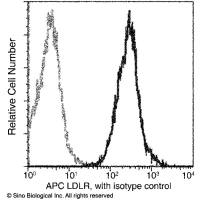Use of Fluorescence Indicators in Receptor Ligands
互联网
410
Fluorescence techniques can provide insights into the environment of fluorescent indicators incorporated within a ligand as it is bound to its receptor. Fluorescent indicators of different sizes and chemical characteristics ranging from hydrophilic to hydrophobic that are incorporated into a receptor ligand can provide insights into the nature of the binding environment, the surrounding structures, and even into conformational changes associated with receptor activation. Methods for determining fluorescence spectral analysis, fluorescence quenching, fluorescence anisotropy, and fluorescence lifetimes of the ligand probes are described. The applications of these techniques to the CCK1 receptor occupied by Alexa488 -CCK are utilized as examples. These methods represent powerful tools to expand our understanding of the structure and function of G protein-coupled receptors.








